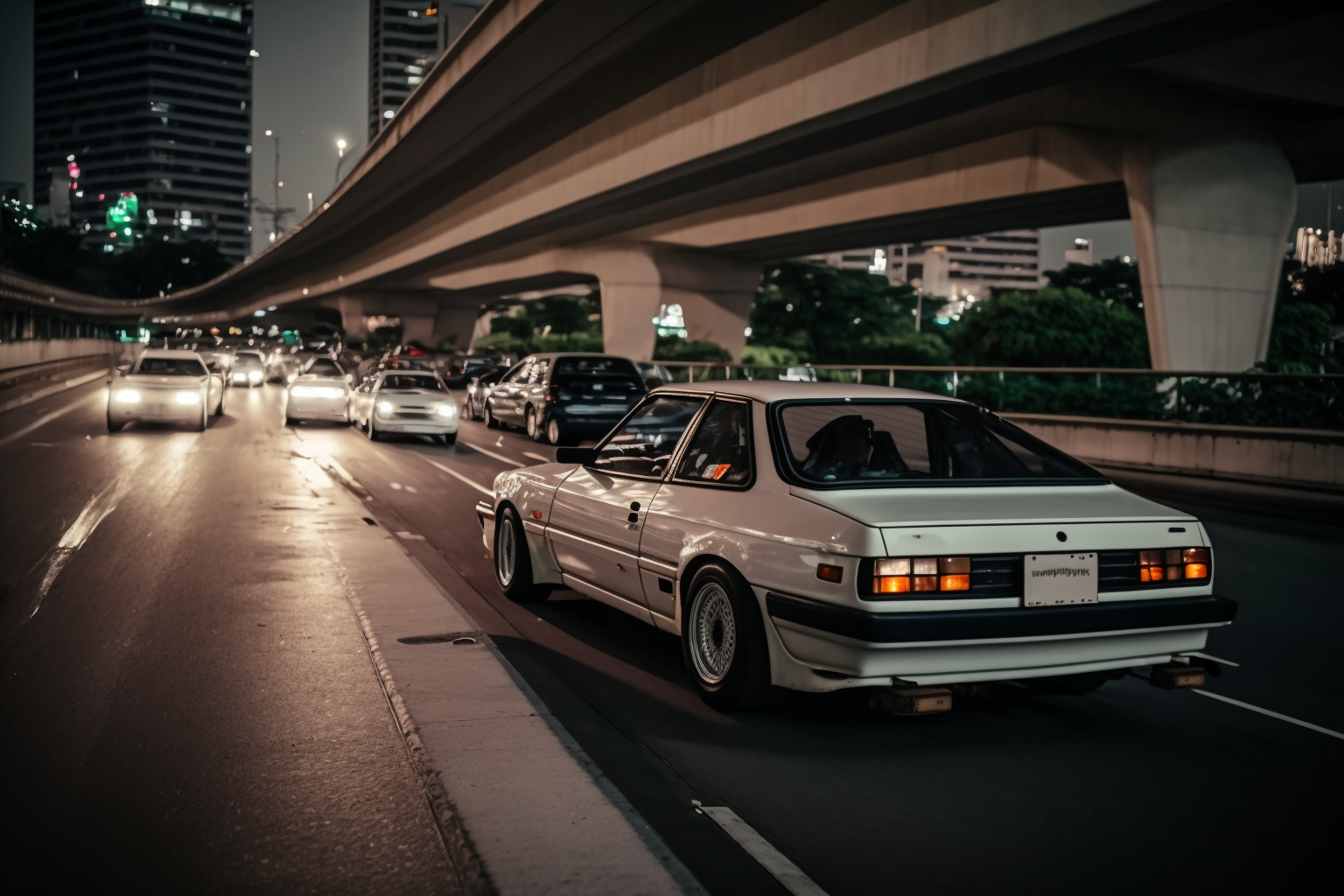Karkrub Review
Specs of the Car
The 1990 Mazda Savanna 1.1 Coupe, more globally recognized as the Mazda RX-7 in some markets, is renowned for its rotary engine, namely the 13B. The car features a 1.1-liter twin-rotor engine which produces approximately 205 horsepower in its turbocharged form. This rear-wheel-drive coupe is equipped with a 5-speed manual transmission. With its compact design, the Savanna weighs in at approximately 1,300 kilograms. Its sporty, sleek appearance and pop-up headlights were iconic for its time and still hold nostalgic appeal today.
History of the Model
The Mazda Savanna, or RX-7, had its debut in 1978 and was intended to replace the aging RX-3. The RX-7 was a complete deviation from its predecessors, being designed as a pure sports car while earlier models were more of a sports coupe. The 1990 version belongs to the second generation, known as the FC, which ran from 1985 to 1992. The second-generation RX-7 was inspired by the Porsche 924 in design and was more streamlined than its predecessor, the FB.
Development of the Model
The development of the Mazda Savanna was deeply rooted in Mazda’s commitment to the rotary engine. By the time the FC series was being developed, Mazda had significantly refined the rotary engine, addressing many of the earlier concerns of rotor tip wear and fuel inefficiency. The second-generation RX-7 was designed with a more mature audience in mind, offering a smoother ride, more features, and increased safety measures compared to the first generation. The 1990 Savanna 1.1 Coupe, in particular, benefited from several refinements over its immediate predecessors, including improved turbochargers and intercoolers in the turbo variants, and more ergonomic interior designs.
Journalist Reviews at the Time of Release
Upon its release, many automotive journalists praised the 1990 Mazda Savanna for its exhilarating performance, especially noting the smooth power delivery of its rotary engine. The car was often lauded for its balance between performance and everyday drivability. The handling dynamics, partly due to its near 50:50 weight distribution, were frequently highlighted as being exceptional. However, some critiques revolved around the fuel economy of the rotary engine and the higher maintenance demands relative to traditional piston engines. The interior, while improved from previous iterations, was also occasionally noted as being less opulent than some competitors in its price range.
Types of Modifications Typically Done
The Mazda Savanna/RX-7 is a favorite among car enthusiasts and has a rich history of modifications. Common modifications for the 1990 model include:
- Engine Upgrades: Due to the unique nature of the rotary engine, many owners opt for aftermarket turbochargers, exhausts, and intercoolers to increase horsepower.
- Suspension: Coilover kits and strut bars are popular modifications to improve the car’s handling and lower the ride height.
- Wheels and Brakes: Upgraded brake kits for better stopping power and aftermarket wheels to improve aesthetics and performance are common.
- Exterior: Body kits, spoilers, and modern lighting (replacing the iconic pop-up headlights) are often seen.
- Interior: Many enthusiasts upgrade the sound system, seating, and add modern amenities like touch screen displays.
In conclusion, the 1990 Mazda Savanna 1.1 Coupe is a testament to Mazda’s commitment to innovation and performance. It stands as an icon in the car community, capturing the spirit of the 90s sports car era.
Karkrub Score
1. Design: 8.5/10
The 1990 Mazda Savanna is a true representation of the 90s sports car aesthetic. With its sleek, aerodynamic profile and the iconic pop-up headlights, it has a design that is both timeless and nostalgic. The lines are clean, and the car looks aggressive without being overly flashy. The interior, while slightly less impressive than the exterior, still exudes a classic sports car vibe.
2. Power: 7.5/10
Powered by the 1.1-liter 13B twin-rotor engine, the Savanna produces around 205 horsepower in its turbocharged form. For its era, this was respectable, but by modern standards, it might feel slightly underpowered. Still, the rotary engine offers a unique power delivery that gives it a distinct edge.
3. Fun: 9/10
The Savanna excels in the fun department. Thanks to its rotary engine, the car has a high revving nature and a unique exhaust note. The rear-wheel drive and near 50:50 weight distribution mean it’s nimble and exciting on twisty roads. It’s a car that demands to be driven and rewards those who do.
4. Comfort: 6.5/10
While the Savanna is undoubtedly a sports car, Mazda tried to infuse it with daily drivability. The ride is smoother than its predecessor, but it’s still firmer than your average sedan. Interior space is also limited, especially in the back. However, for its primary purpose as a two-seater sports coupe, it offers decent comfort.
5. Reliability: 6/10
The rotary engine is both a blessing and a curse. While it offers unique power delivery and a high rev limit, it also has its quirks. Rotary engines require more maintenance than piston engines, especially concerning apex seals. Regular upkeep is crucial to avoid issues.
6. Safety: 6/10
By today’s standards, the safety features on the 1990 Mazda Savanna might seem basic. During its time, it had essential safety features, but it lacked the advanced safety technologies that modern cars have. There are seat belts and basic crumple zones, but no advanced airbags, stability control, or modern collision avoidance systems.
7. Value: 8.5/10
The Mazda Savanna offers a lot of value, especially for enthusiasts seeking a classic sports car experience. Its unique rotary engine, combined with its iconic design and respectable performance, makes it a sought-after classic. While maintenance can be higher than average, the driving experience and the car’s appreciation potential offset this.
Average Score: 7.4/10
The 1990 Mazda Savanna 1.1 Coupe stands as an iconic representation of 90s sports cars. It offers a unique driving experience thanks to its rotary engine, and its design is still appreciated today. While it has its quirks in reliability and safety, the overall package offers significant value for those who value the essence of a true sports car.

Leave a Reply